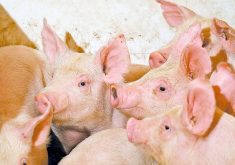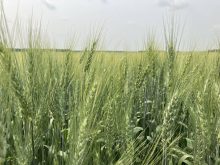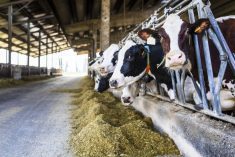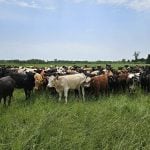Chicago | Reuters — Chicago Mercantile Exchange live cattle futures closed lower on Tuesday in anticipation of a seasonal bump in supplies that could further pressure prices for market-ready, or cash cattle, traders said.
Last week, cash cattle in Texas and Kansas moved at $144 per hundredweight (cwt), $1 lower than the week before (all figures US$). Cash cattle in Nebraska sold at $145 to $146.50, down 50 cents to $2 from the prior week.
“The trick of the cattle market is how low do you go with cash markets essentially above the futures, but coming down?” said U.S. Commodities analyst Don Roose.
Read Also

U.S. grains: Soybean futures set two-week high on US weather worry, soyoil rally
Chicago Board of Trade soybean futures touched a two-week high on Friday on worries that heat may threaten U.S. crops and expectations that the country’s biofuel policy would boost demand for soyoil, analysts said.
Despite their profitable margins, packers are not expected to actively buy cattle until beef demand shows consistent signs of improvement, traders and analysts said.
The morning’s wholesale choice beef price rose 91 cents/cwt from Friday to $232.89. Select cuts jumped $1.59 to $222.49, based on U.S. Department of Agriculture data.
Beef packer margins for Tuesday were at a positive $61.85 per head, compared with a positive $5.40 a week ago, as calculated by industry analytics firm HedgersEdge.com.
June futures led losses after investors simultaneously sold that contract and bought back months in a trading strategy known as bear spreading.
June ended at 135.6 cents, down 0.7 cent. August was down 0.375 cent to 136.75 cents.
CME feeder cattle rose on short covering and lower corn prices that may help ease input costs for feedlots.
August and September closed up 0.65 cent per pound at 193.5 cents and 194.8 cents, respectively.
Hogs sag with pork demand
CME hogs slipped on tepid pork demand as grocers gauge how much product moved over the three-day holiday weekend before restocking meat cases, a trader said.
Government data showed the morning’s wholesale pork price fell $1.38/cwt from Friday to $113.68.
Uncertainty regarding prices for slaughter-ready hogs in the near term kept potential futures buyers on the defensive.
While some packers are buying supplies for the rest of this week’s production, others are drawing from a glut of hogs that may have developed on farms over the long holiday weekend.
On Tuesday, packers processed 424,000 hogs, 12,000 more than last week, according to USDA.
Futures are overpriced based on CME’s hog index at 111.55 cents, which sidelined would-be buyers.
Anticipation of tight hog supplies pegged to the porcine epidemic diarrhea virus (PEDv) limited futures’ losses on Tuesday and might return to the market on Wednesday.
Bullish hog futures investors are looking for a sharp drop in PEDv-related slaughters that so far have been nearly offset by heavier hogs, said Roose.
June hogs closed 0.35 cent/lb. lower at 116.5 cents, and July down 0.3 cent at 123.425.
— Theopolis Waters reports on livestock futures markets for Reuters from Chicago.




















